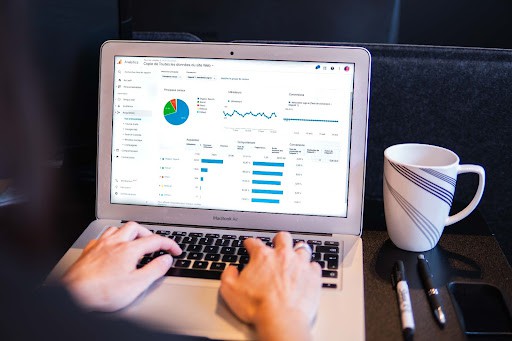What is Web Analytics and How Can I Get Started
- Datameer, Inc.
- August 16, 2022

What really is web analytics? Websites have become invaluable to the success of modern businesses. From the robust sites owned by big brands to simpler sites managed by our neighborhood businesses, these websites have become like vehicles driving businesses to success.
Like literal vehicles, websites need headlights to light up the way for business owners as they navigate through this dark, uncertain economic climate.
And that’s where web analytics comes in, web analytics – the light that helps us glean insights from our website data.
In this article, we’ll answer this question, look at the various categories of web analytics, and find out why web analytics is very important.
And If you stick around till the end, we throw in a bonus and guide you on how you can get started with web analytics.
Are you ready for this journey? Let’s dive in!
Web analytics: what’s that?
Web analytics is the measurement, gathering, analysis, and reporting of web data used to improve web usage.
Web analytics is a tool that is useful for business and market research, as well as for evaluating and enhancing the effectiveness of websites.
Categories of Web Analytics
There are two categories of web analytics, namely, off-site and on-site web analytics:
1. Off-site web analytics
Off-site web analytics is the process of keeping track of user behavior on websites other than that of the business to determine potential customers.
Off-site web analytics makes it possible to see how a company is doing in relation to rivals. It focuses on information gathered from many online sources, including forums, search engines, and social media.
2. On-site web analytics:
On-site web analytics, on the other hand, is a more precise term for the use of analytics to monitor customer behavior on a particular website in order to gauge how effective the site is.
There is a wide range of tools for this type of analytics such as Google Analytics being the most popular among them. Others include;
Ahrefs, SEMrush, Matomo, Crazy Egg, MarketingCloudFx, Kissmetrics, Moz Pro, Adobe Analytics, Clicky, etc.
Business owners measure website metrics such as where visitors came from, the amount of time they spent on the website, how they located the site and activity on the site with these tools.
Why is Web Analytics Important?
We’ve talked about the concept and the two main categories; the next question is Why, why should you bother investing in web analytics?
Here’s an interesting thought based on our preamble:

Without website analytics, how do you see, i.e., understand your visitor’s preferences, track bounce rate, or even determine what’s working and what’s not?
Website analytics is crucial for your organization, and here are some reasons why:
1. Web analytics can be used to find the right audience and streamline content to target that audience:
Web analytics is at the frontline, helping businesses deliver ads and content tailored to customers in a particular region.
It’s important that businesses find the right audience as that can translate to more profit and lead.
2. Recognize how users access and use your website or service and then optimize it:
App or web analytics has made it easy to find and fix problems on the website or service.
3. Study consumer opinions of your company, products, or services:
It’s a no-brainer that how customers perceive your brand is the lifeline of any business.
Businesses must always look for ways to gain insights into the minds of their customers, and web analytics helps to do just that.
With the results from your analytics, you can glean insights on how to improve user experience and service delivery and ultimately increase customer conversion and retention rate.
4. Track the effectiveness of your digital marketing campaigns.
How to get started?
Implementing web analytics isn’t rocket science, but there are a few steps required to deploy a good strategy:
1. Set goals in line with the business.
You must determine the goals and end result of what you want to achieve.

2. Secondly, Collect data by tracking key metrics. The type of data you will collect or measure will depend on the goals you set for the business.

Let’s assume you would like to know which of your channels or product features reels in the most leads.
Using tools like google analytics, you can configure the metric you want to track, perform real-time monitoring via reports and find answers to the questions you’re asking, i.e., lead conversion(in this case).
3. Process the data:
The ultimate purpose of web analytics is to turn data into useful information that will generate valuable insights for the business.
Because it tracks a whole variety of metrics, the sheer amount of data garnered can be overwhelming for non-technical individuals who will need to work on it.
Snowflake is a cloud-based marketing data warehouse that can help with the consolidation of your marketing data.
It offers scalable storage and computing services to meet the needs of growing businesses, so what that means is that you don’t have to worry about running out of space.
And just like Snowflake, there’s Datameer! – A Saas tool that enables both marketers, marketing analysts, and data professionals to collaborate and perform ad-hoc modeling and analysis on your web analytics data.
With our easy-to-use -code interface, Businesses can leverage Datameer to make sense of all the data garnered from analytics.
Sounds interesting?
You can explore Datameer by trying out our demo version here… let’s get you started with free Datameer trial!


